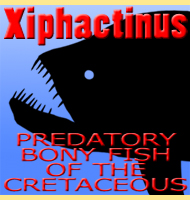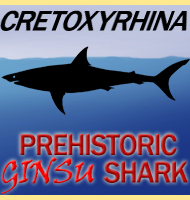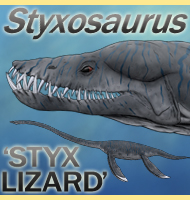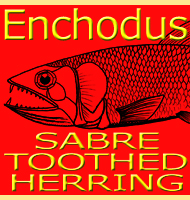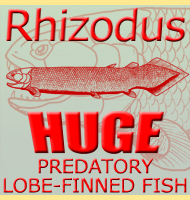


Cimolichthys
Name:
Cimolichthys.
Phonetic: Sim-oh-lik-fiss.
Named By: Leidy - 1857.
Classification: Chordata, Teleostomi,
Actinopterygii, Aulopiformes, Enchodontoidei, Enchodontidae.
Species: C. levesiensis
(type), C. anceps, C. gladiolus, C.
nepaholica, C. semianceps, C. sulcatus.
Diet: Carnivore/Piscivore.
Size: Around 1.5 to 2 meters long.
Known locations: Canada & USA.
Time period: Cenomanian through to the Maastrichtian
of the Cretaceous.
Fossil representation: Many individuals, some
almost complete.
Cimolichthys is a genus of late Cretaceous fish that are considered to be closely related to salmon. Their bodies are known to have been covered with large scutes that may have provided a degree of protection against some predatory fish. We are fairly certain about the diet of Cimolichthys since the remains of fish and squids have been found in association with what would have been the stomach. One specimen of Cimolichthys however was found with the gladius (internal shell) of the large squid Tusoteuthis in its mouth, indicating that this individual Cimolichthys died while trying to swallow a Tusoteuthis that was too big for its mouth. This could have cause a blockage to the gills causing the fish to suffocate.
----------------------------------------------------------------------------
Random favourites
 |
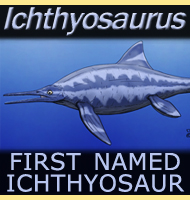 |
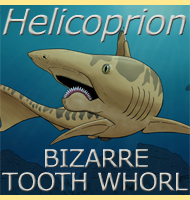 |
